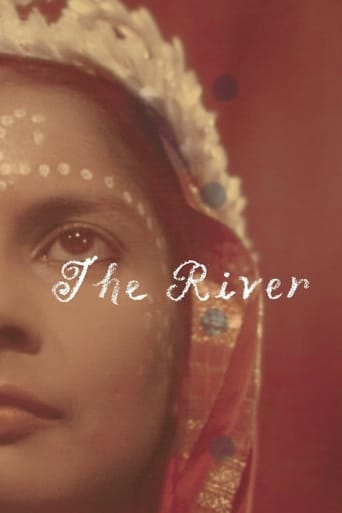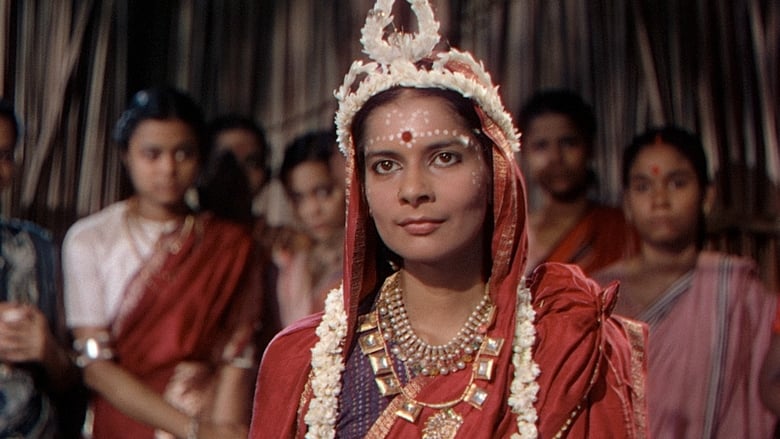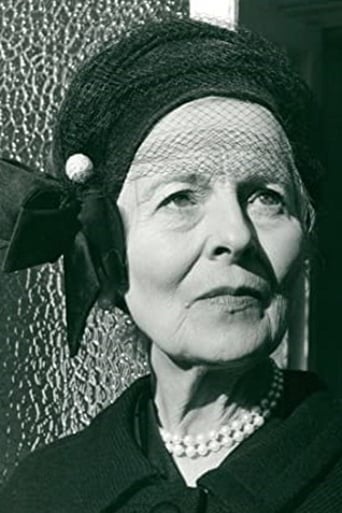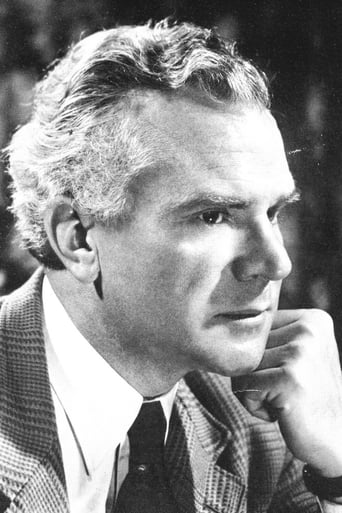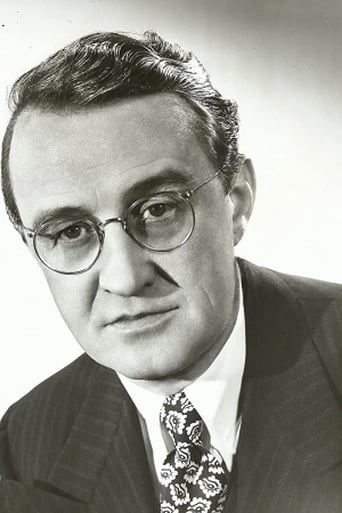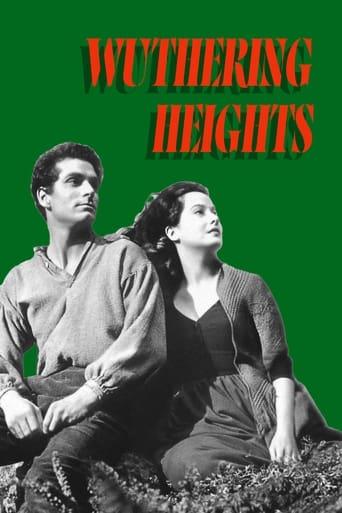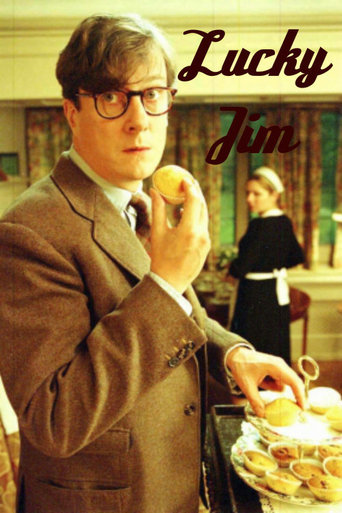The River (1951)
Director Jean Renoir’s entrancing first color feature—shot entirely on location in India—is a visual tour de force. Based on the novel by Rumer Godden, the film eloquently contrasts the growing pains of three young women with the immutability of the Bengal river around which their daily lives unfold. Enriched by Renoir’s subtle understanding and appreciation for India and its people, The River gracefully explores the fragile connections between transitory emotions and everlasting creation.
Watch Trailer
Free Trial Channels
Cast


Similar titles
Reviews
An absolute waste of money
If you like to be scared, if you like to laugh, and if you like to learn a thing or two at the movies, this absolutely cannot be missed.
I think this is a new genre that they're all sort of working their way through it and haven't got all the kinks worked out yet but it's a genre that works for me.
I enjoyed watching this film and would recommend other to give it a try , (as I am) but this movie, although enjoyable to watch due to the better than average acting fails to add anything new to its storyline that is all too familiar to these types of movies.
This is the story of a few English families living on the banks of the Ganga in Bengal during the colonial era who are tasked by the British Raj to run the jute trade. This familiar setting invokes several clichés in our minds and Renoir sets about transcending each of them. To start with, the narrator's father who supervises the jute trade is a gentle soul. He is not the typical penny pinching capitalist but someone who finds the never ending 'river' of human beings carrying jute from farm to factory, fascinating. His interactions with locals both in and not in his employment show us how he believes in equality, respect and co-existence. The family takes after him and his 'house full of women' has embraced a new culture with open arms without any fear of losing their own. The family celebrates Indian festivals, mingles freely with the locals and experiences the great spiritual seduction that India is. The metaphor of the river as a symbol of the infiniteness of creation with its unending cycles of creation and destruction is exemplary. The family experiences the permanence of the river and contrasts the transitory nature of their existence with it. The pains and joys of life that are experienced uniquely by each one of the three women are so different and yet so similar! Some of us get a kiss on the lips, others a kiss on the forehead and others remain with unrequited desires and confused emotions. And yet, like the change of seasons we all bloom and flourish and we all perish in the end while the cycle of life goes on.So what should we do given this human condition that we've been subjected to? Like all great artists, Renoir attempts to answer this most enigmatic and intriguing question. 'The River' proposes 'Consent'. It seems to whisper gently to our worried minds and torrid hearts to accept the ebb and tide of our existence, to not quarrel, to not revolt (What we think of as revolts are really tiny quarrels when you look at our insignificance and the enormousness of creation). The message here is to accept, to open our eyes and for the first time watch without resentment, to observe and learn from nature. As we follow nature's course intently we might get bitten by a snake and die a swift death or a new insight will turn the course of our lives and push us in another unfamiliar direction.Sitting on the banks, witnessing the course of the river and that of our existence, Renoir tells us that all is not lost. That this journey, however short or insignificant it might be, contains the potential to experience limitless joy and beauty - the innocence of children, the pleasure of creating new life, the camaraderie of good friendship and above all love for another person no matter how flawed or imperfect they are.
The River is, understandably, very high on top of film-buffs' lists of favorite Jean Renoir films. It's also a picture that needs a little patience on some more modern viewers' parts- it's more meditative than it looks at first, and despite the narration from adult Harriet (taken, I would guess, verbatim from Rumer Godden's original semi-autobiographic novel) coming off every now and again as slightly padded to certain moments that should be without a word spoke, it takes the nature of the environment, the locations, the people, the culture, the spirituality, all at a simple subjective viewpoint. Which, in a way, makes it more powerful than it would be had it been put through some kind of filter of a native. Renoir knows that he's a foreigner, and that Godden was as well, so that it's at times almost anthropological in the side glances at the Indian life along the river. Through this perspective, and in the framework of a 'coming-of-age' story, is a warm, mostly innocent film of love and life.It would be one thing to try and deconstruct the performances- it would take too long than is allotted on this site. Suffice to say Renoir does much with a cast that have either acted mostly in character-acting parts, or (in the case of real life one-legged Captain John played by Thomas Breen) not much at all. Even from an actress like Patricia Walters, who under a less careful attention to detail would seem as spoiled, or petty and intolerable, as a Veruca Salt, in Harriet there's a tenderness there when she has her heart broken over and over again as she watched John fall into the arms of Valerie. I especially liked how she stayed true to that sense of bewilderment, disillusionment that has to come at that age when concerning the passing of life (the tragic death of her younger brother, the truest innocent in the film), and what it means to really love and love back. She might still seem all frustrated and confused in that final scene in the boat with John, but it works nonetheless at the emotional side. Other actors like Suprova Mukerjee (her only significant performance in a film) and Radha, with her sad eyes, also contribute heavily. Only Nora Swinburne feels like a 'conventional' English matriarchal presence, though not as a 'bad' thing to the story.What should likely be discussed more than anything are the visuals, the look, the style, the carefully ritualistic world that the people along the river contribute and take away from and how they're depicted. Renoir, as has been written, didn't want to put any of the usual Hollywood stereotypes of tigers and elephants and such in the picture- his reverence also contributes to the meditative quality, how there's at times documentary qualities to how the narration goes over the movements of the river scenes. And maybe the most daring scene being the unbroken take of the dance in Harriet's story, where the woman has to be in-line with the camera-work (as Scorsese, major fan of the film, noted on the DVD, there's no dolly for Renoir), and never misses a step to the exquisite beat of the music. Any other director might go in for the close-up, or go back to a long-shot for a master, but here it's like a scene in Singin in the Rain: we're privy to every step, as the length of the shot becomes part of the dance, of (not to sound pretentious) the communication of it. I don't even listen to much Indian music or watch the dances, but it's spellbinding in the case of the River.And, along with The Wizard of Oz, some of Powell and Pressburger's late 40s work, and Johnny Guitar, it's one of the most superb Technicolor films of the period. As many a modern viewer will not take into account (I wouldn't of had I not gone to an art museum lately), Renoir is the son of one of the great painters (forget impressionist, just in general), and it's to this that one can see pitch, brightness, the depth and scope of a palette used to its fullest. It could be argued that The River isn't a masterpiece in terms of the story or characters, but I'd hate to be with the one who'd argue about how the color doesn't work or doesn't sit well. Aside from the painterly compositions, it's just a very pleasant film to look at, and it would be for this reason I would seek it out if it plays on a revival screen in New York City or other. 9.5/10
I'm at a loss, frankly, to understand why people rave about this film. I saw it this evening and was aching for it to end.The picture seems to alternate between being a Cooks Tour Indian travelogue and a tedious domestic drama in the worst of the British Raj tradition. The white people are all very serious and say things that I think are supposed to be profound but, for the most part, simply sound ludicrous. (There's actually one mother-daughter scene where daughter is told that the pain of childbirth is nothing compared to the joy of making a child for the husband you love. I expect that the "close your eyes and think of England" line ended up on the cutting room floor.) The tedious story is aggravated by some of the worst acting you're likely to have the chance to see in a single two hour sitting and an endless voice-over narration that seems to substitute for actual filmic storytelling. (Plus there are a couple of unbelievable moments -- like when the 13/14? year old English girl is apparently free to wander about the town by herself. I'm not saying she wouldn't have been safe, but I find it hard to believe she would be allowed to do that.)But rest assured that all the Indians we see are seen only through the lens of how picturesque their impoverished lives are --- especially when you're watching from the veranda of your big English house. Everyone seems to spend the day playing music or bathing in the river or preparing for a festival. How fun!!! I can only think that the supersaturated Technicolor was overwhelming to audiences in the 1950's and that people hadn't really seen anything about India before. To me today, it comes across as a garbled mess -- like a Powell/Pressburger film made on a $2.95 budget. Ugg.If you want to see some wonderful film-making about the real India of roughly the same period watch any (or all) of Satyajit Rey's amazing "Apu" trilogy (Pather Panchali, Aparajito, Apur Sansar) instead.
The good news is that Renoir's distinctive 'rhythm' is at work here; a sort of pacing that only a master can achieve. The bad news is that some of the dialogue and the acting by both professional and amateur actors is agonisingly arch. The theme of life, destruction and rebirth is neatly illustrated in the Hindu rituals and mirrored in the tribulations of a rather theatrically played English colonial family whose teenagers lose innocence and in the case of one actual innocent, a life. The film ends beautifully with a glorious Indian spring and a new birth in the colonial family. All well and good but for the Edwardian almost Victorian sentimentalising of childhood innocence. It was such agony to sit through that I was tempted to scream 'FIRE' in order to end the torture and make my escape.

